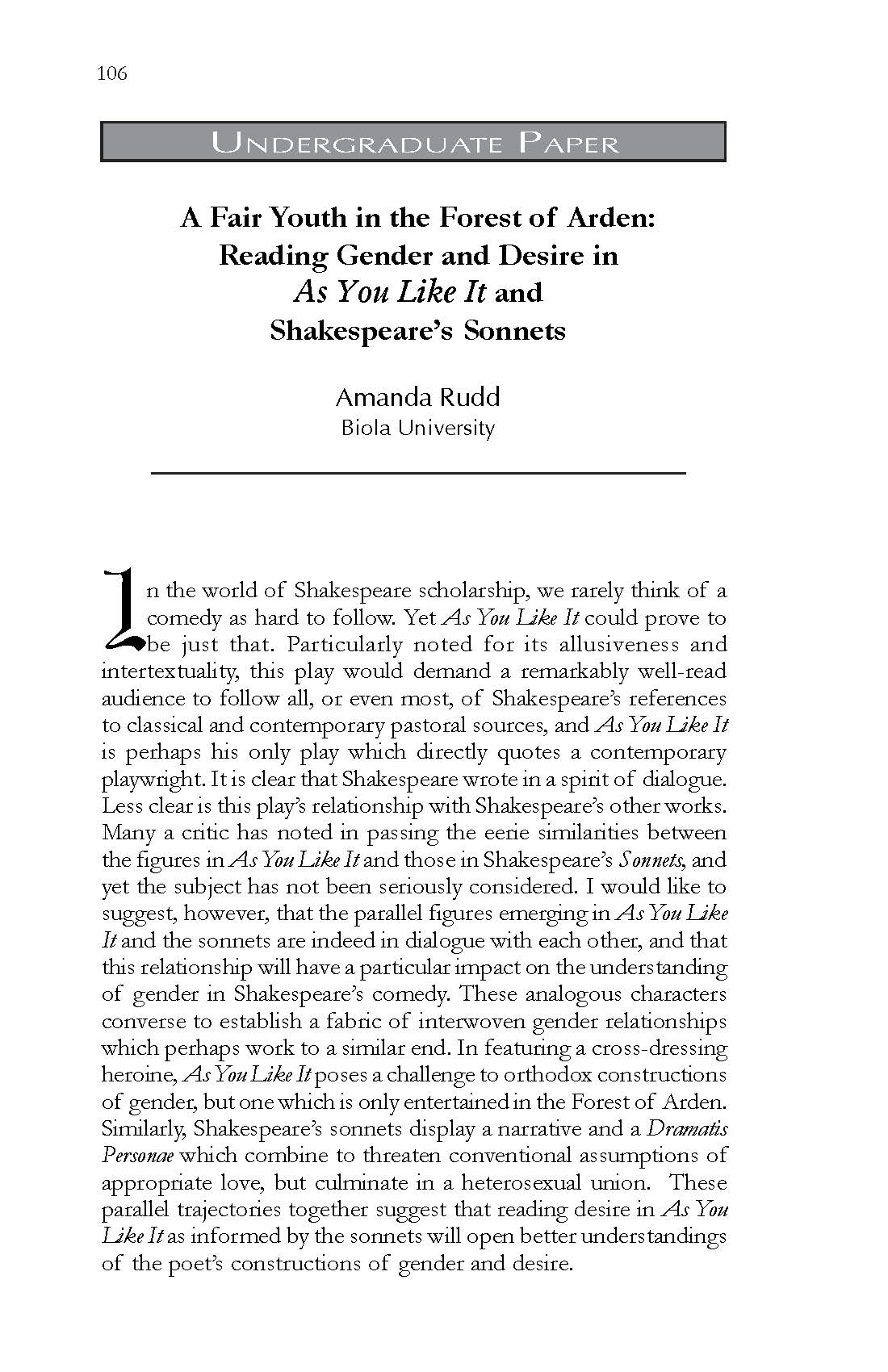A Fair Youth in the Forest of Arden: Reading Gender and Desire in As You Like It and Shakespeare’s Sonnets
Main Article Content
Abstract
In the world of Shakespeare scholarship, we rarely think of a comedy as hard to follow. Yet As You Like It could prove to be just that. Particularly noted for its allusiveness and intertextuality, this play would demand a remarkably well-read audience to follow all, or even most, of Shakespeare’s references to classical and contemporary pastoral sources, and As You Like It is perhaps his only play which directly quotes a contemporary playwright. It is clear that Shakespeare wrote in a spirit of dialogue. Less clear is this play’s relationship with Shakespeare’s other works. Many a critic has noted in passing the eerie similarities between the figures in As You Like It and those in Shakespeare’s Sonnets, and yet the subject has not been seriously considered. I would like to suggest, however, that the parallel figures emerging in As You Like It and the sonnets are indeed in dialogue with each other, and that this relationship will have a particular impact on the understanding of gender in Shakespeare’s comedy. These analogous characters converse to establish a fabric of interwoven gender relationships which perhaps work to a similar end. In featuring a cross-dressing heroine, As You Like It poses a challenge to orthodox constructions of gender, but one which is only entertained in the Forest of Arden. Similarly, Shakespeare’s sonnets display a narrative and a Dramatis Personae which combine to threaten conventional assumptions of appropriate love, but culminate in a heterosexual union. These parallel trajectories together suggest that reading desire in As You Like It as informed by the sonnets will open better understandings of the poet’s constructions of gender and desire.
